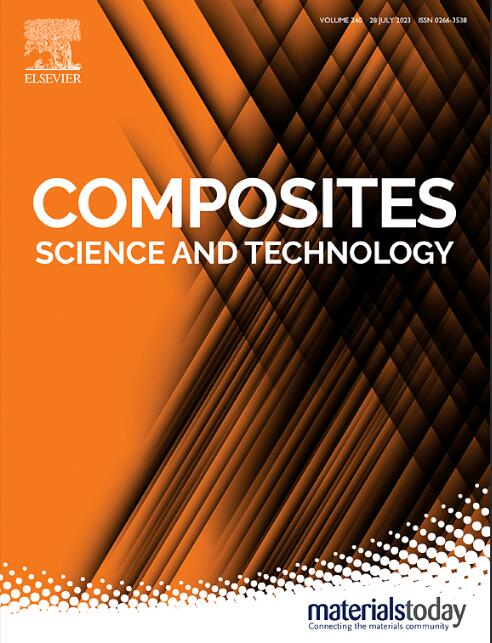摩擦电机制提高了聚酰亚胺复合纳米纤维膜的压电性能
IF 8.3
1区 材料科学
Q1 MATERIALS SCIENCE, COMPOSITES
引用次数: 0
摘要
柔性压电传感器展示了可穿戴电子产品的重大进步。然而,开发能够在极端条件下工作且具有特殊热稳定性的压电材料仍然是一个关键挑战。本文采用共静电纺丝技术制备了FPI/PAN纳米纤维复合膜,实现了压电和摩擦电效应的协同集成。协同作用通过电荷叠加和界面极化提高了机械-电转换效率。所制备的传感器具有良好的压电电压输出,可达8 V,响应和恢复时间分别为12 ms和14 ms。在15 Hz/10 N的频率下,压电输出在10,000次循环后保持稳定,表现出优异的耐久性。此外,该传感器还具有准确检测各种人体运动的能力,例如关节屈曲、眨眼和动态撞击。值得注意的是,FPI/PAN膜在500°C前保持结构稳定性。此外,该膜在0-1 MHz范围内具有较低的介电常数(1.62 ~ 1.67)和较小的介电损耗(0.0008 ~ 0.0024)。本研究为自供电纳米纤维可穿戴传感器的设计和开发提供了一条新的途径。本文章由计算机程序翻译,如有差异,请以英文原文为准。
Triboelectric mechanism enhances piezoelectric performance of polyimide composite nanofibrous membrane
Flexible piezoelectric sensor demonstrates significant advancements in wearable electronics. However, the development of piezoelectric materials capable of operating under extreme conditions with exceptional thermal stability remains a critical challenge. Herein, FPI/PAN nanofibrous composite membrane was fabricated via a co-electrospinning technique, achieving a synergistic integration of piezoelectric and triboelectric effects. The synergistic interaction enhances mechanical-to-electrical conversion efficiency through charge superposition and interfacial polarization. The as-prepared sensor demonstrates favorable piezoelectric voltage output of 8 V and rapid response and recovery times (12 ms and 14 ms, respectively). The piezoelectric output remains stable after 10,000 cycles at 15 Hz/10 N, demonstrating excellent durability. In addition, the sensor has the ability to accurately detect diverse human motions, such as joint flexion, eye-blinking, and dynamic impacts. Notably, the FPI/PAN membrane maintains structural stability before 500 °C. Furthermore, it is found that the membrane exhibits a low dielectric constant (1.62–1.67) and smaller dielectric loss (0.0008–0.0024) within the range of 0–1 MHz. This study represents a new path for design and development of self-powered nanofibrous wearable sensors.
求助全文
通过发布文献求助,成功后即可免费获取论文全文。
去求助
来源期刊

Composites Science and Technology
工程技术-材料科学:复合
CiteScore
16.20
自引率
9.90%
发文量
611
审稿时长
33 days
期刊介绍:
Composites Science and Technology publishes refereed original articles on the fundamental and applied science of engineering composites. The focus of this journal is on polymeric matrix composites with reinforcements/fillers ranging from nano- to macro-scale. CSTE encourages manuscripts reporting unique, innovative contributions to the physics, chemistry, materials science and applied mechanics aspects of advanced composites.
Besides traditional fiber reinforced composites, novel composites with significant potential for engineering applications are encouraged.
 求助内容:
求助内容: 应助结果提醒方式:
应助结果提醒方式:


